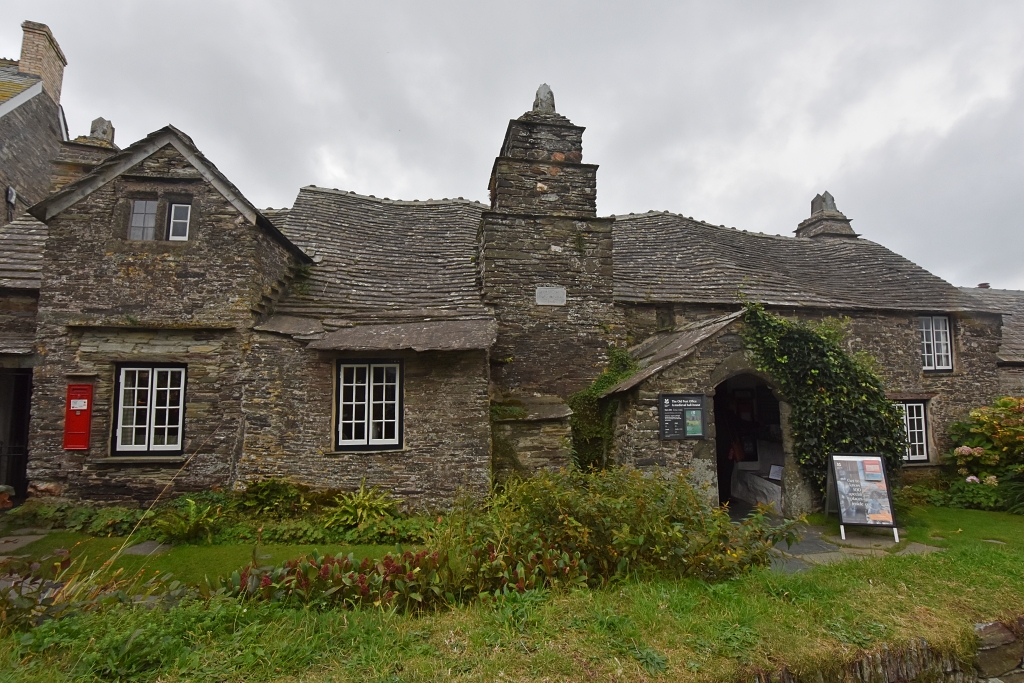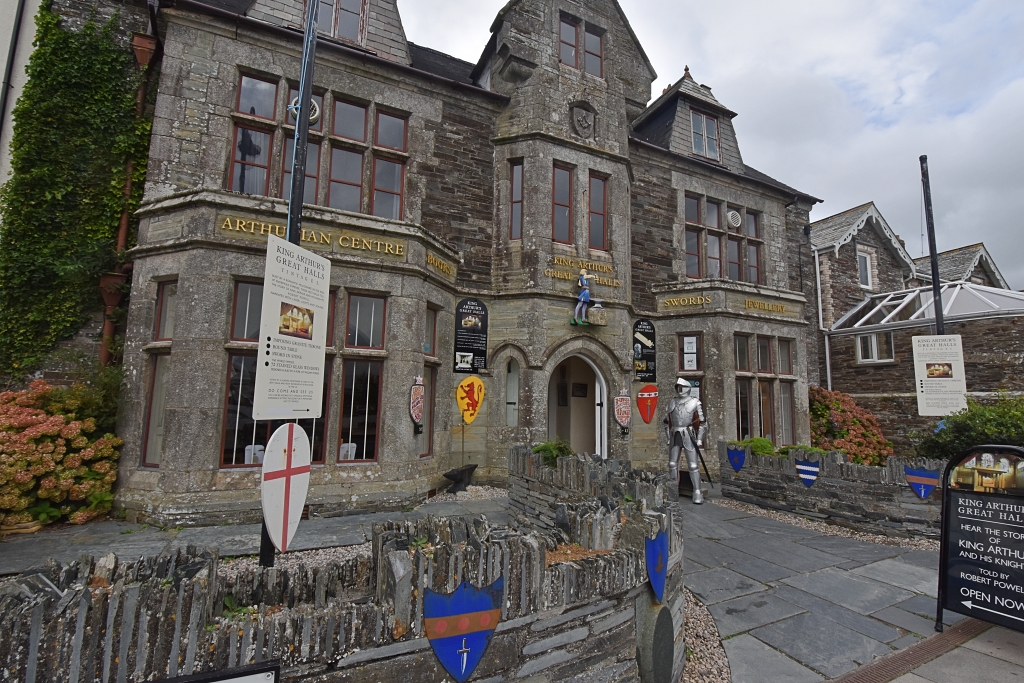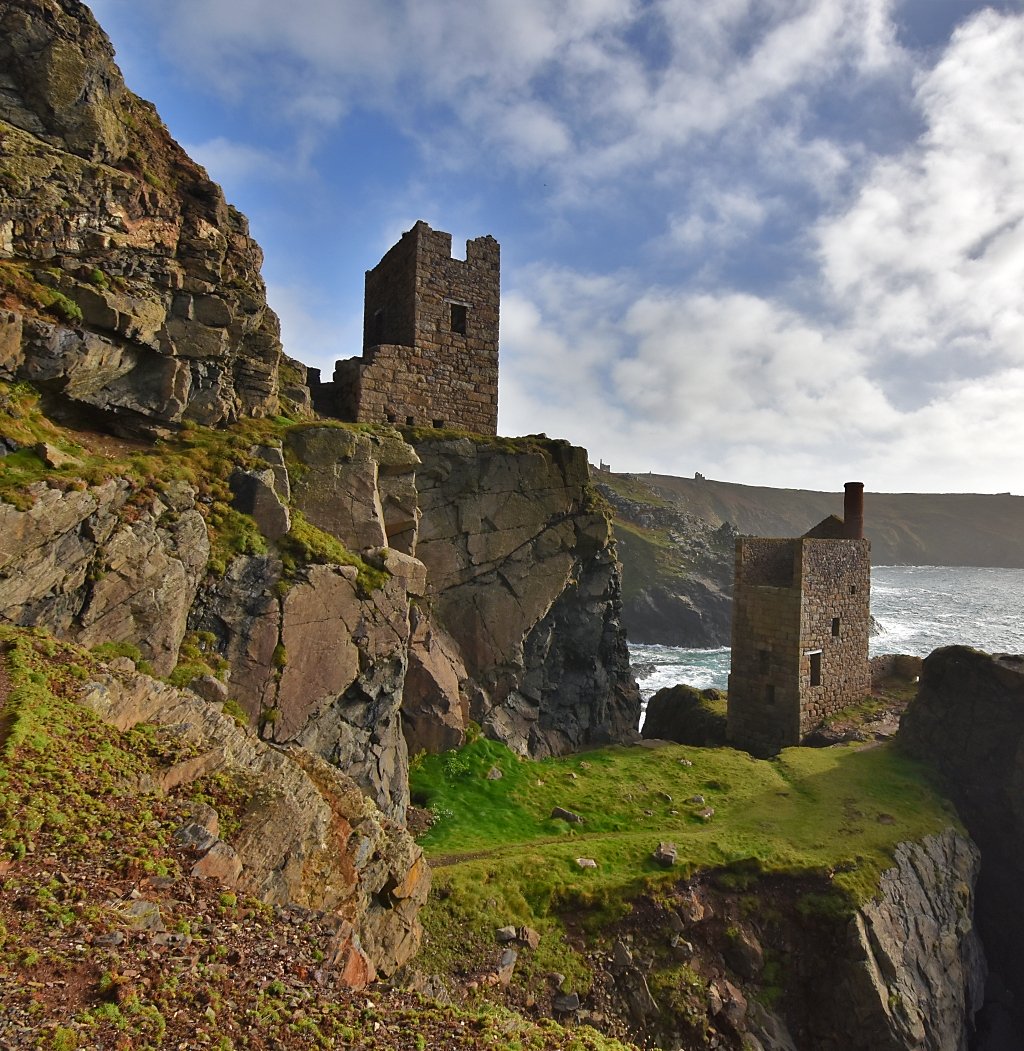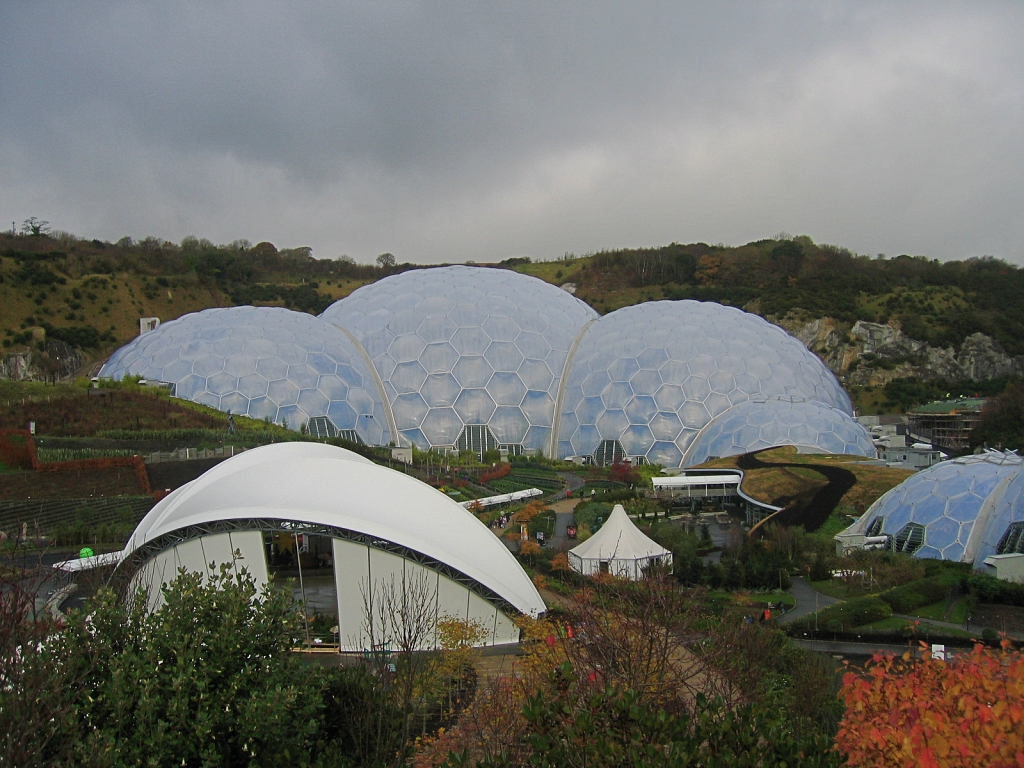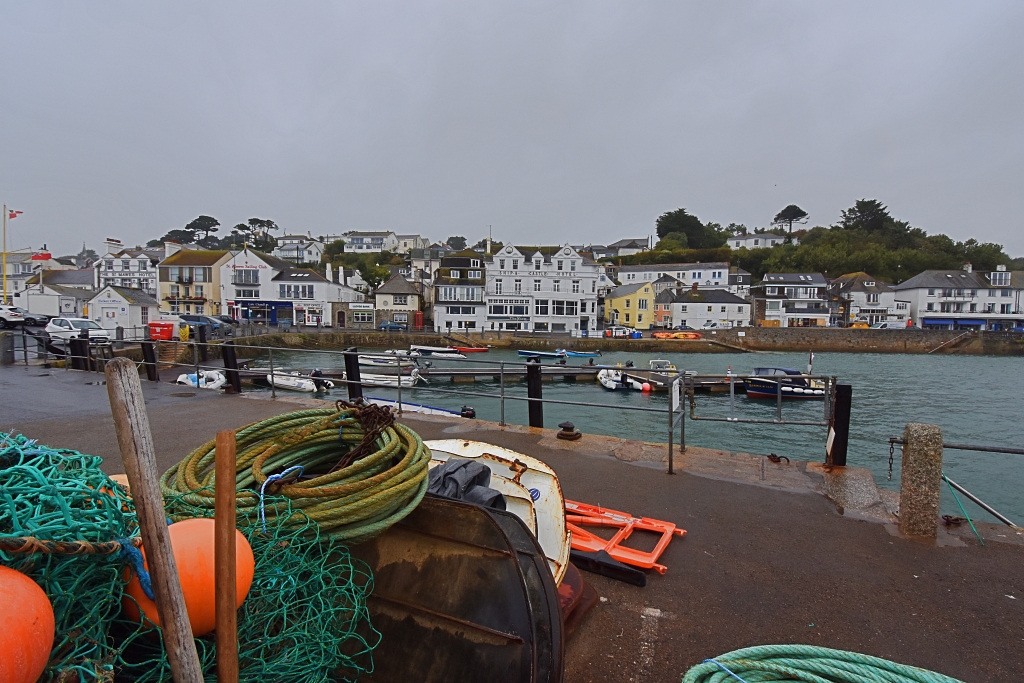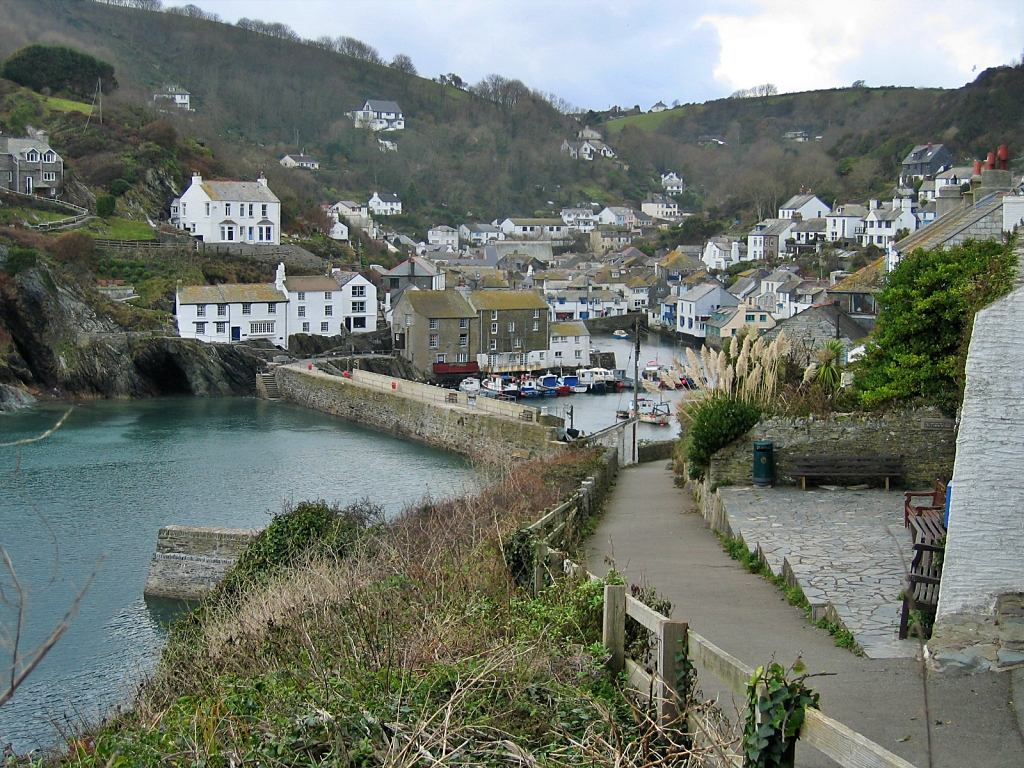The
History and Mystique of Tintagel Castle
Whenever I’m asked for a list of places to visit in England, Tintagel Castle always makes the cut - and it matters little if the person asking loves history or mystery, reality or fantasy, whether a dramatic location appeals to them, or they prefer to explore a romantic ruin.
Tintagel Castle ticks all the boxes. It isn’t just a crumbling ruin set high on a cliff on the very edge of England. Neither is it “just” a place of myth and legend, of often-retold stories of greatness to temper its remoteness. Instead, it’s a place where history and imagination blend. It’s a real castle with a real history, which became a location in a story so fascinating that it swallowed the place and remade it in our minds.
Tintagel
Castle’s history stretches back to the 5th century, and archaeological
evidence shows that in the 6th to 7th centuries, it was a
place of trade and influence connected to communities as far away as the Mediterranean.
Roman and Byzantine goods arrived at this remote outpost, showing that
Tintagel’s owners were neither poor nor savages. Instead, here are people who
could afford wine, olive oil, fancy tableware, glass, and jewellery from faraway places.
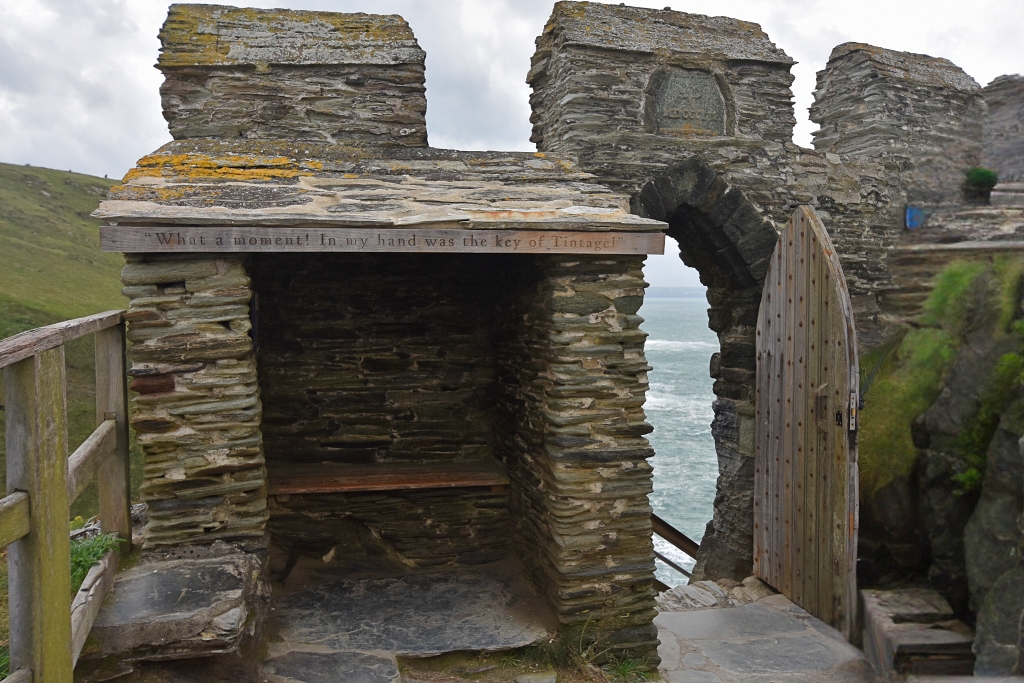 Tintagel Castle Gateway © essentially-england.com
Tintagel Castle Gateway © essentially-england.comIt seems that Tintagel, on the edge of England, was well-known for hundreds of years. Then, in 1136, Tintagel became famous! In his popular History of the Kings of Britain Geoffrey of Monmouth named Tintagel as the birthplace of the legendary King Arthur.
Tales of chivalry and courtly love were the 12th and 13th century’s “reality TV” and Geoffrey of Monmouth, despite calling himself a historian, was rather a teller of riveting, dramatic tales - or what we today would call a bestselling fantasy author. Told and re-told by minstrels, discussed by nobles and commoners alike, his stories were so famous that Uther Pendragon, Merlin, Morgaine, Lancelot, Parsifal, and Arthur have remained household names to this day.
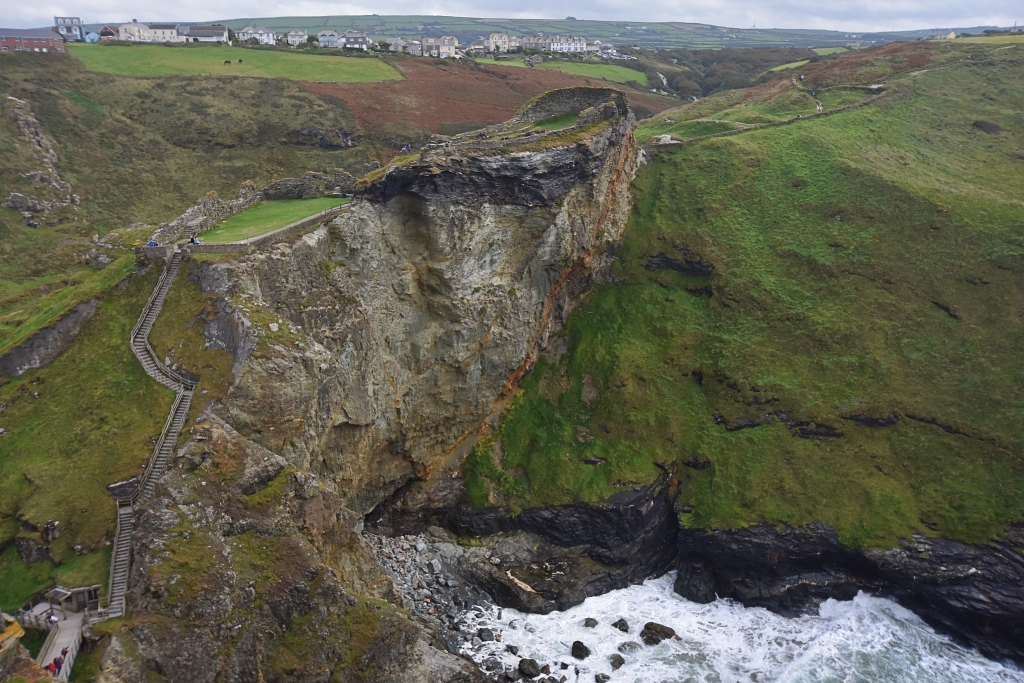 Dramatic Views Towards the Upper and Gatehouse Courtyards © essentially-england.com
Dramatic Views Towards the Upper and Gatehouse Courtyards © essentially-england.comWhen the Earl of Cornwall built a stronghold on Tintagel’s cliff in the 1230s – cleverly augmenting natural defences with masonry - the legend gained even more momentum. Soon, stories of Arthur and his Knights of the Round Table were everywhere, and places all over the West Country and further afield claimed associations with Arthur.
But it all started here, on a jagged promontory with views over the endless grey green of the Atlantic Ocean, where Geoffrey of Monmouth set the story of the once and future king.
Will you be walking in the footsteps of a mythical king if you visit?
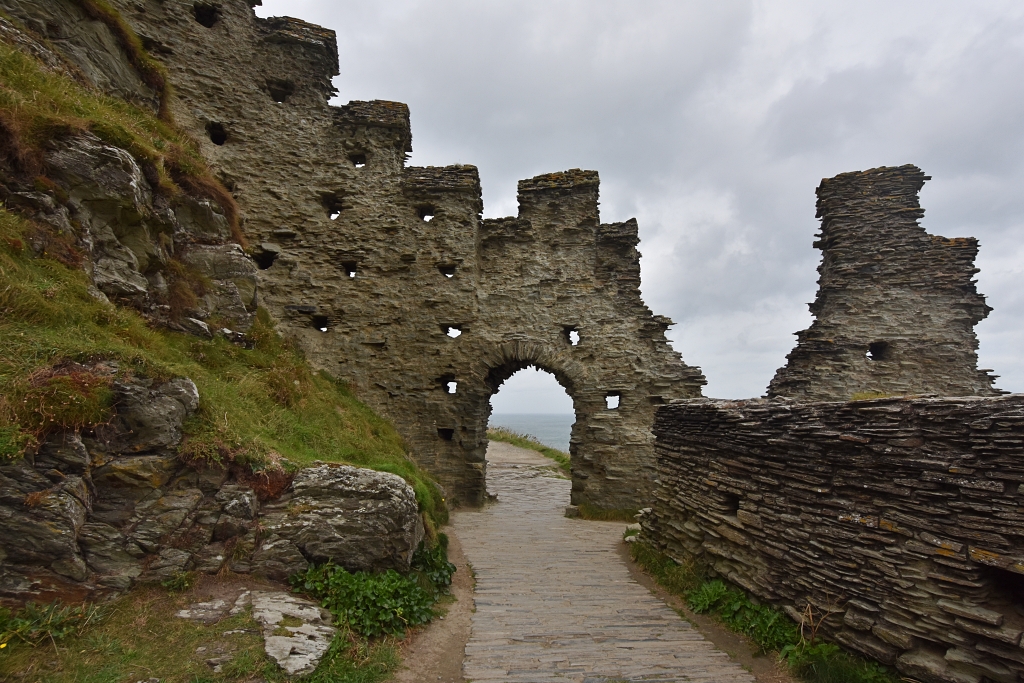 Part of Tintagel Castle Wall © essentially-england.com
Part of Tintagel Castle Wall © essentially-england.comMaybe. At the very least, you’ll step into a world where history and myth mingle like sea and mist. You’ll get to explore the vision of Richard, Earl of Cornwall, and his master masons, as they built a stronghold fit for a king.
Exploring Tintagel Castle
As you wander the castle ruins, here are a few places worth stopping at:
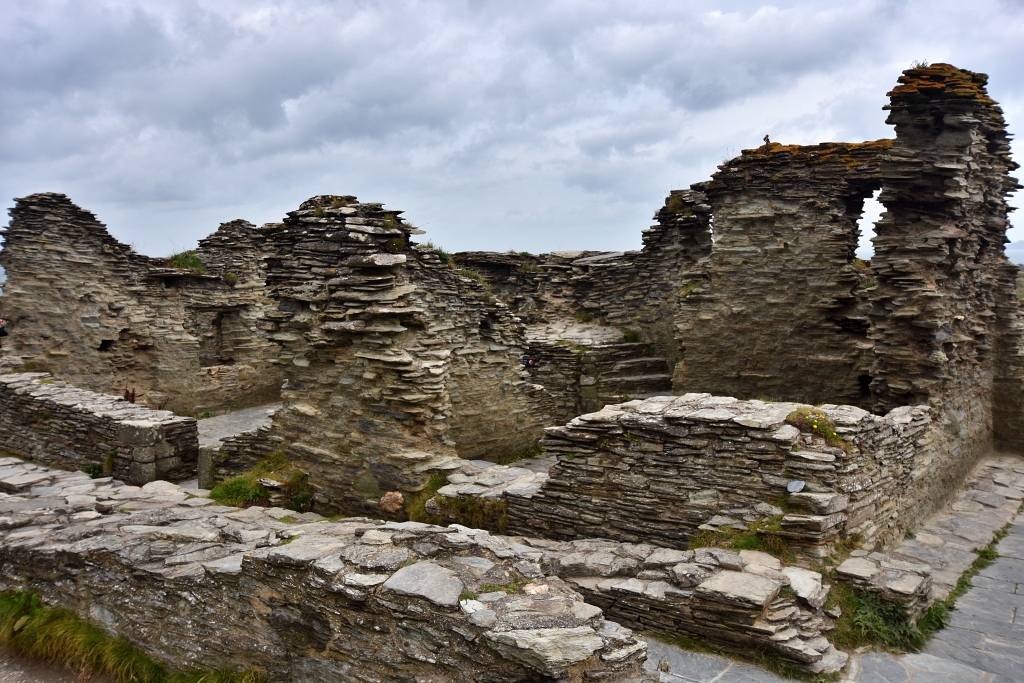 The Great Hall © essentially-england.com
The Great Hall © essentially-england.comThe Great Hall
In medieval times, this would have been the heart of the castle, where people worked, ate, socialised, and slept.
The lord of the castle would have received and entertained important guests in the hall, and - quite possibly - a minstrel or two would have sung of Arthur and his knights.
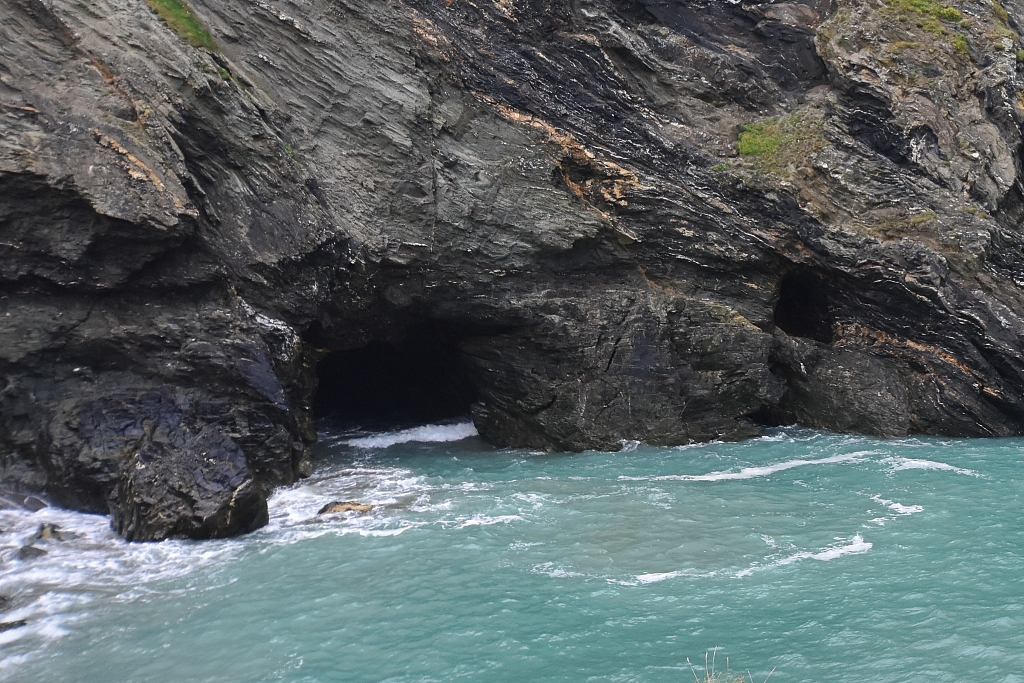 Merlin's Cave at High Tide © essentially-england.com
Merlin's Cave at High Tide © essentially-england.comMerlin’s Cave
Forever twined with Arthur’s story are the legends of Merlin and his feats of magic. It’s unsurprising, therefore, to find a sea cave at the bottom of the cliff associated with the wizard.
Whether you’ve come to explore history or myth, you’ll find Merlin’s Cave an enchanting spot.
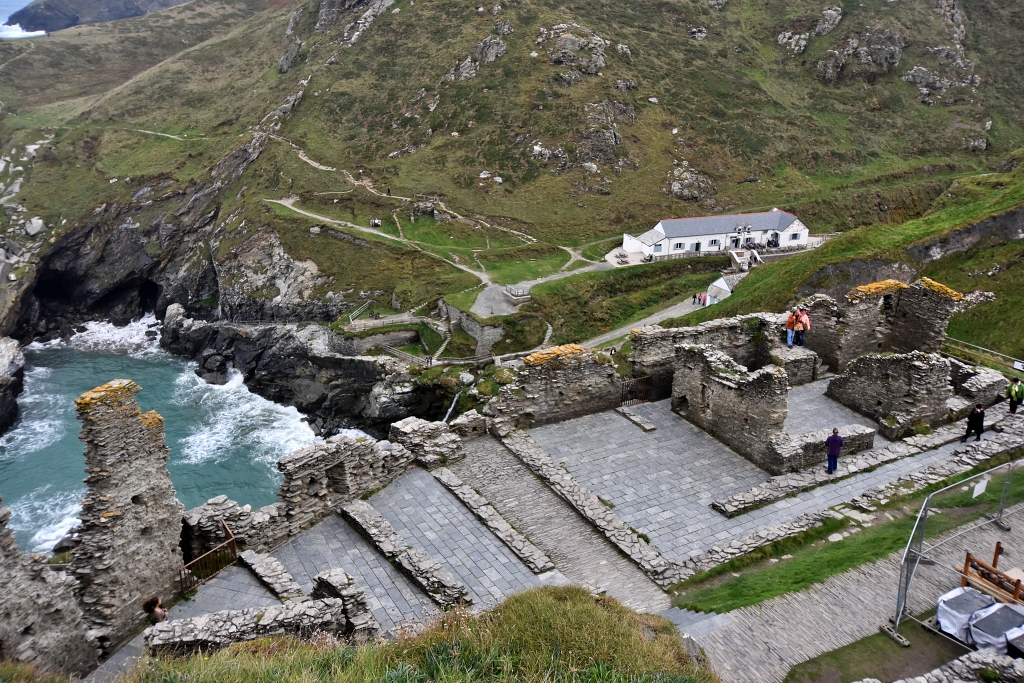 Looking Down to the Island Courtyard © essentially-england.com
Looking Down to the Island Courtyard © essentially-england.comThe Island Courtyard
Brave the dramatic bridge and the Island Courtyard will reward you with stunning panoramic views of the surrounding coastline. This secluded space once housed the castle’s residents.
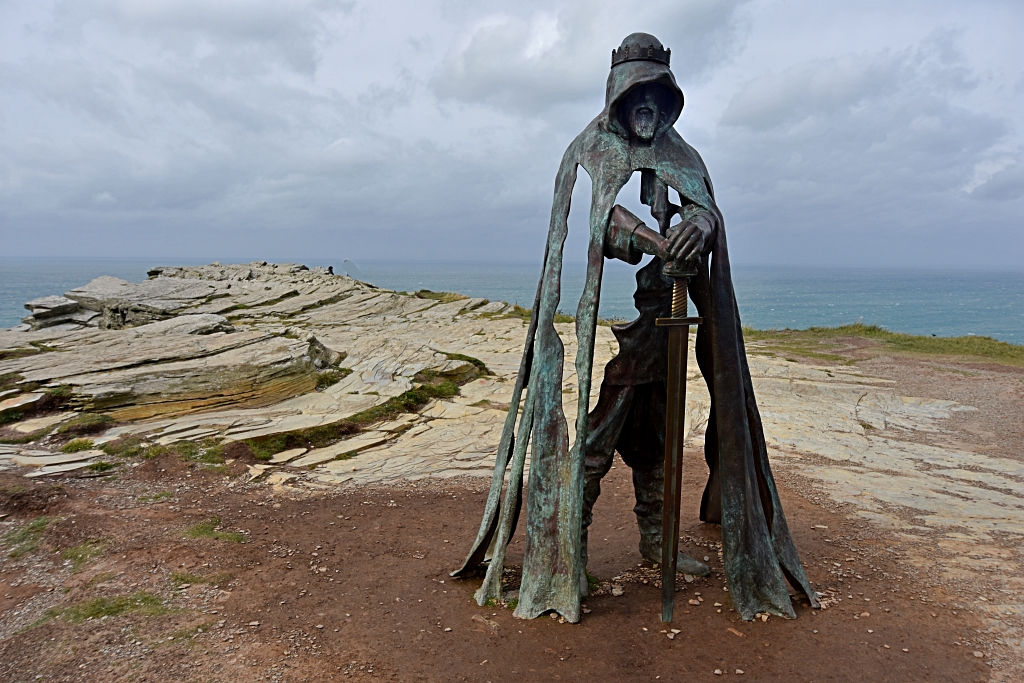 Gallos Statue © essentially-england.com
Gallos Statue © essentially-england.comGallos
Often called the Statue of King Arthur, Gallos is an 8ft tall statue of a cloaked, crowned figure, resting his gloved hands on a sword.
Commissioned by English Heritage and designed, sculpted, and cast by sculptor Rubin Eynon, it succeeds in weaving the disparate strands of Tintagel’s history and myth into a compelling story.
Stand beside it for a while, watch the clouds shift behind and through its cloak, and listen to the wind. It may hold the answer to your questions.
Since our last visit on a very windy day in September 2016, English Heritage have built a new, award-winning footbridge between the island and mainland. The new bridge makes it a little easier to get around the castle as it cuts out a lot of climbing up and down steps. But remember, much of the castle is on uneven ground and there are still steps.
For more information on Tintagel Castle, opening times, and events please visit the English Heritage website here. It's also wise to check their website and/or social media platforms as the castle can be closed when the weather turns bad.
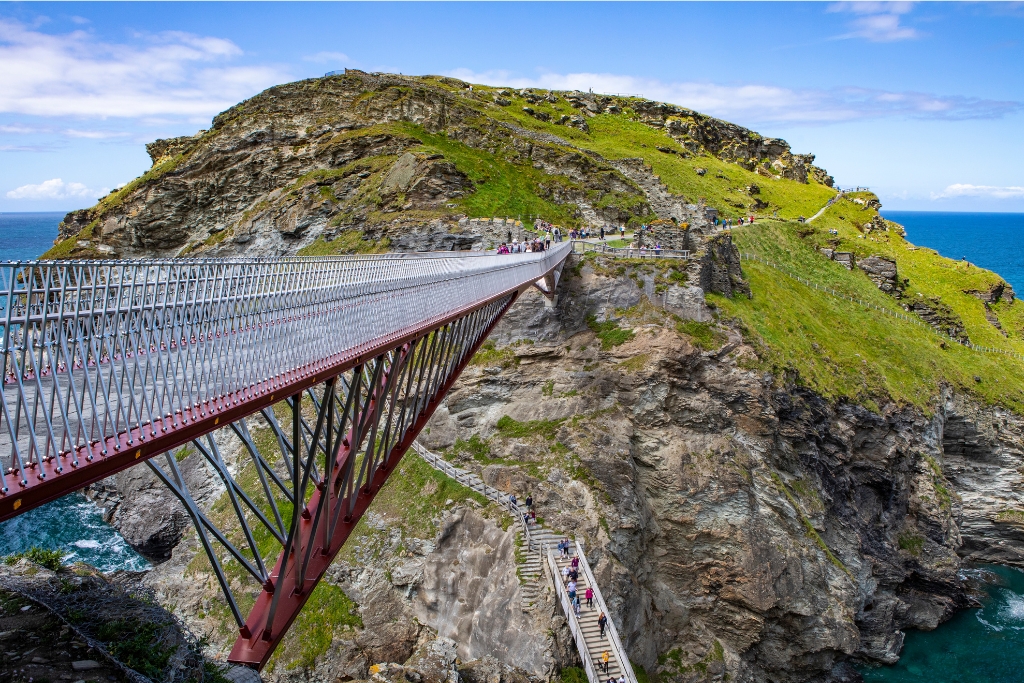 Tintagel Castle Footbridge © chrisdorney | Getty Images canva.com
Tintagel Castle Footbridge © chrisdorney | Getty Images canva.comBeyond the fascinating history, dramatic setting, and literary credentials of its castle, Tintagel village itself makes for a wonderful day out.
Wander the streets, explore the magic and craft shops, browse through new and second-hand books, treat yourself to a Cornish pasty, and don’t forget to send home a postcard from the Tintagel Old Post Office. This 14th century building, with its wonky local brown slate roof and stone façade, offers another, less regal, glimpse into medieval life and a charming selection of local Cornish goods. And, if touring Tintagel Castle was not enough don’t forget to visit King Arthur’s Great Halls which has rave reviews on Tripadvisor. We also recommend the short walk down to St. Materiana’s Church which dates to medieval times and it’s well worth exploring its tranquil interior. There are also superb coast views.
If you need to find a hotel, then try one of these search platforms...
